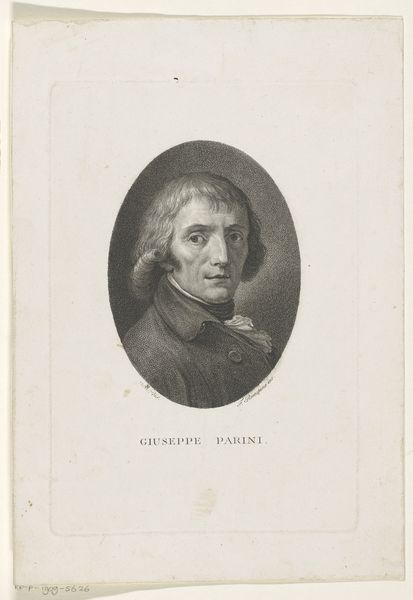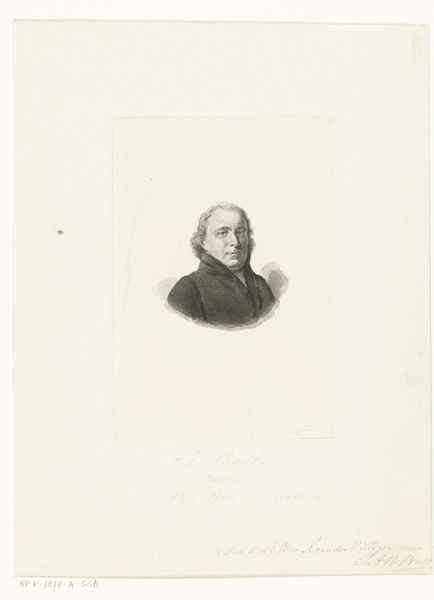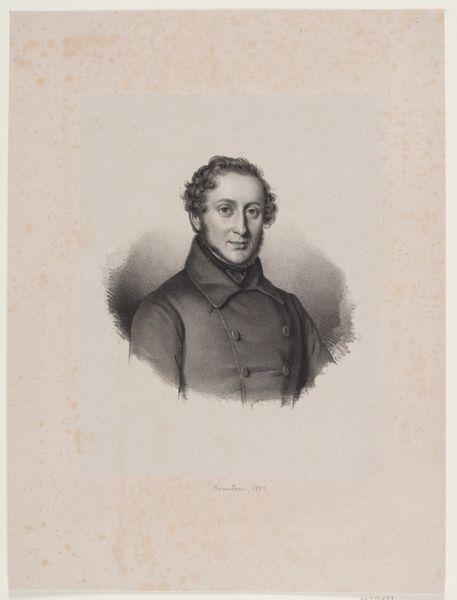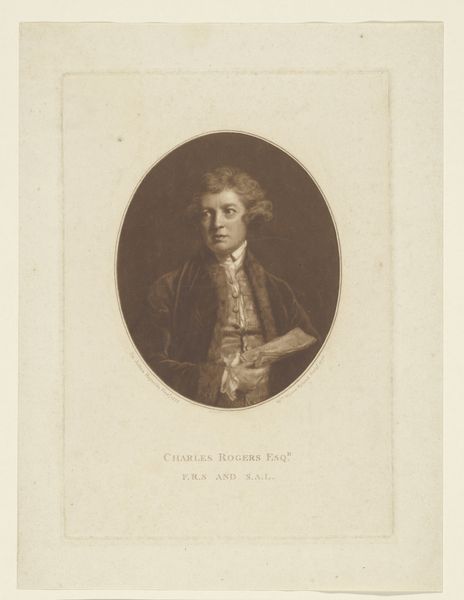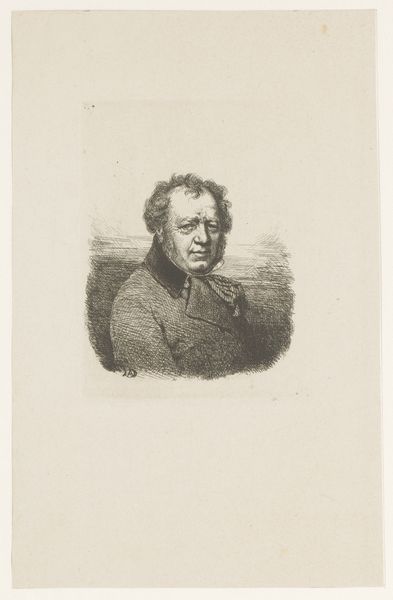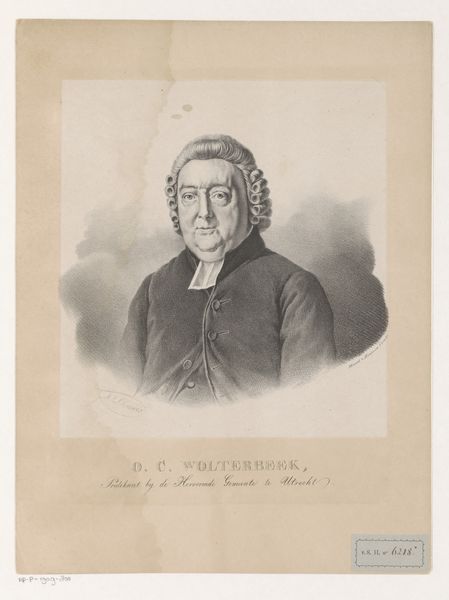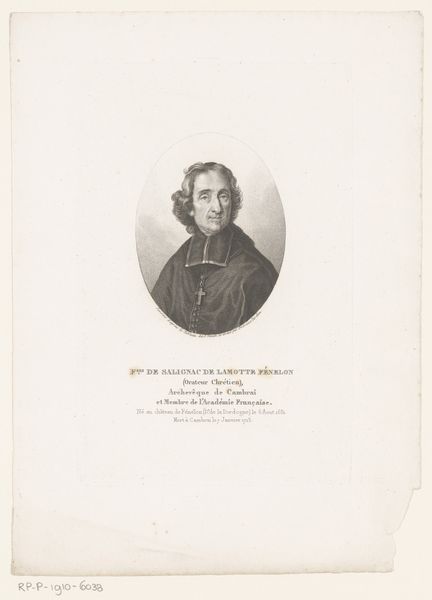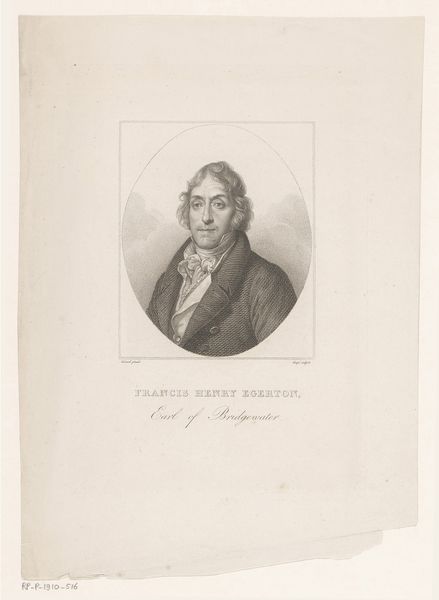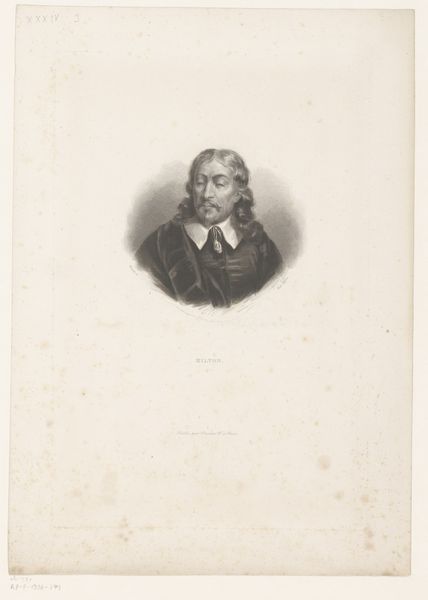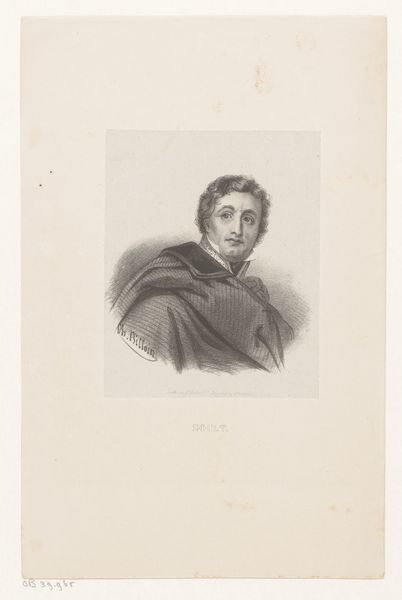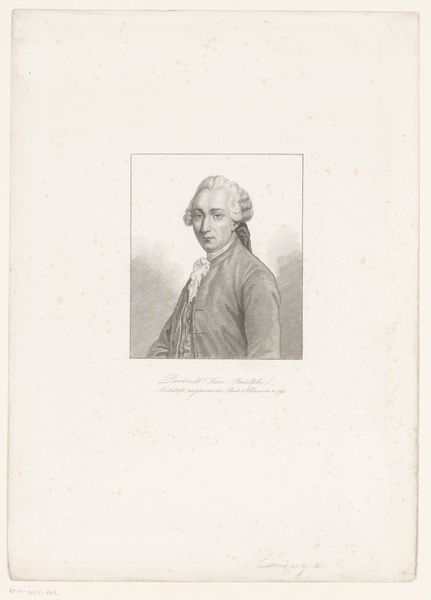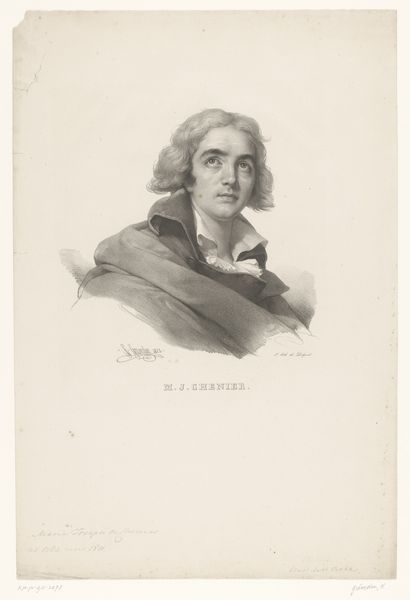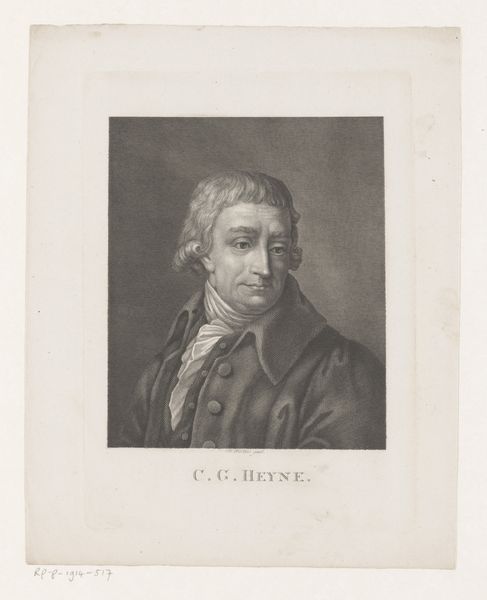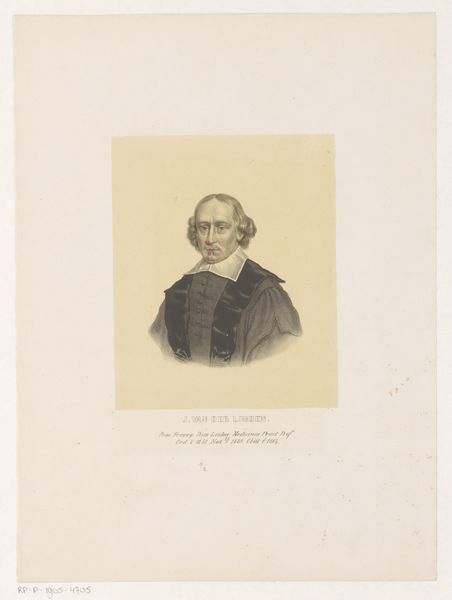
print, engraving
#
portrait
#
neoclacissism
# print
#
classical-realism
#
pencil drawing
#
line
#
engraving
Dimensions: height 272 mm, width 179 mm
Copyright: Rijks Museum: Open Domain
Curator: Welcome to the Rijksmuseum. We're standing before "Portret van dichter Giuseppe Parini," a striking engraving likely created between 1810 and 1900. Editor: My immediate impression is one of thoughtful contemplation, a sense of reserved power rendered through delicate lines. The artist seems intent on capturing the sitter’s interiority. Curator: Precisely. The work adheres closely to Neoclassical ideals, emphasizing clarity of form, balanced composition, and a restrained emotional register. The artist skillfully uses line and hatching to define form and texture, all within that perfect oval. Editor: Absolutely, the technical execution is masterful, but the piece feels emotionally muted, despite the subject, Parini, being a celebrated poet known for his socially critical verse. I can't help but wonder if the constraints of the Neoclassical style subtly muted his fiery spirit. Was this presentation deliberately chosen, or were his more radical traits simply omitted? Curator: The engraving, with its precise rendering, is a clear example of Classical Realism. Think of the lines of his jacket. Every element of visual data lends an air of objectivity. The details in the subject's wig and expression point to a keen interest in representing physical reality through close observation. Editor: I see your point, but it is precisely in this carefully constructed image, that we could ask ourselves about the act of visual control. We cannot forget that portraiture then was mostly in the hands of the privileged and in the service of certain politics and social control, depicting who mattered and how they wanted to be remembered. How does the political agency of the poet we know transpire through these sharp, neutral lines? Curator: While your perspective offers valuable context, I think we can also read the portrait as an authentic likeness within its artistic constraints. It offers insight into how a figure was viewed and represented within the era's visual language, highlighting its emphasis on reason and order. Editor: Fair enough. Perhaps it's this tension – between the poet's known critique of society and the portrait's formal restraint – that makes it such a compelling piece, reminding us of the constant negotiation between an individual's essence and their public persona. Curator: Indeed. Its lasting value lies, I believe, in the artist’s understanding of form, structure, and a meticulous attention to detail, even more than his ability to capture a likeness or embody emotion. Editor: A nuanced demonstration of a particular era, indeed. Hopefully, our audience is prompted to reflect on the intricacies of art, history, and identity that intersect within it.
Comments
No comments
Be the first to comment and join the conversation on the ultimate creative platform.
